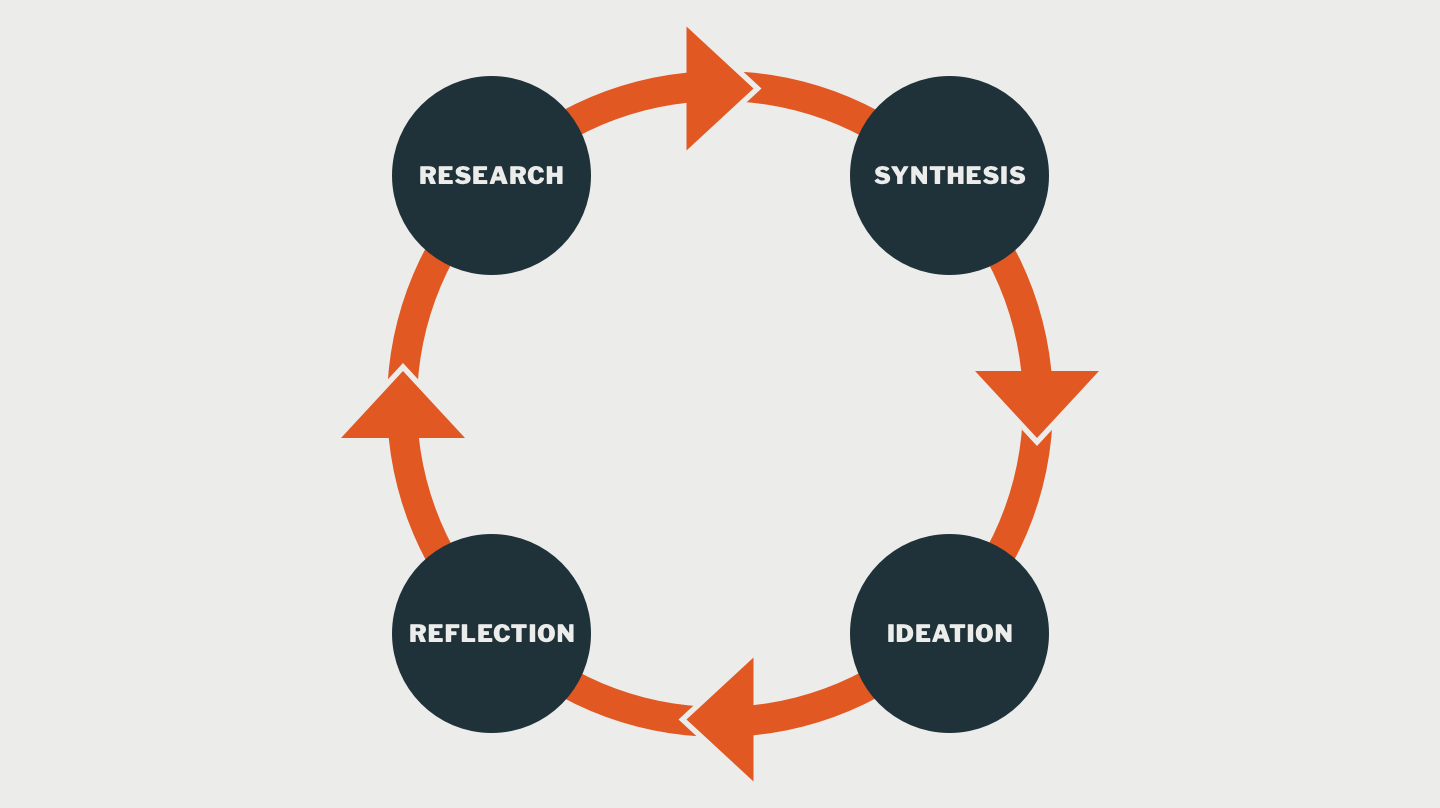How do you make a good product?
Part 4: How does design work in this process?
There are fifty million articles written on the design process. Most of them map out the build-measure-learn loop or some variant thereof. My mental model is similar, although a little more granular. Since the basic loop is well-known, I’m going to provide a quick overview of the distinctions I use, and then do a deep dive into one particular (and particularly interesting) part.

My design process starts with research. The type and scope of the research depends on the context of the problem. The work could involve ethnography, competitive or industry research, user research, usability testing, brand analysis, contextual inquiries, the list goes on. Research is guided, but the real meat comes with synthesis.
Synthesis is a process for interpreting the data, using formal techniques to glean knowledge from the data. More on this later.
Ideation takes the resulting knowledge from the work done and makes a new physical or digital product. There are lots of ways to ideate: rough sketching, paper prototypes, high-fidelity prototyping. Ideating should include some form of usability testing as well, to confirm that initial, small assumptions are correct.
Finally, reflection. Reflection allows me to stop and take stock. It’s antithetical to the move-fast-and-break-things way of working, but it’s necessary. Whereas agile software development puts an emphasis on speed and efficiency, forcing myself to stop and reflect provides a good and necessary brake on the process, to consider aspects of the work that are important but not immediately apparent when you’re heads-down on a project. Reflection allows me to ensure that we’re actually advocating for customers.
And that brings us back to research; we take our experience, determine what the next course of action is, and do the homework necessary to move forward.
That’s the basic loop. The reason I prefer it to a simpler model is that it seems to scale better: this process can be used in very tactical situations, (such as guiding a product team to determine how to implement a new feature) all the way up to business strategy, (such as prioritizing high level, long-term goals.) And that is how design can be used to effect significant change: it isn’t simply about how an app looks. Design is a series of processes and methods that, when employed with intention, can help to solve all kinds of problems, big or small.